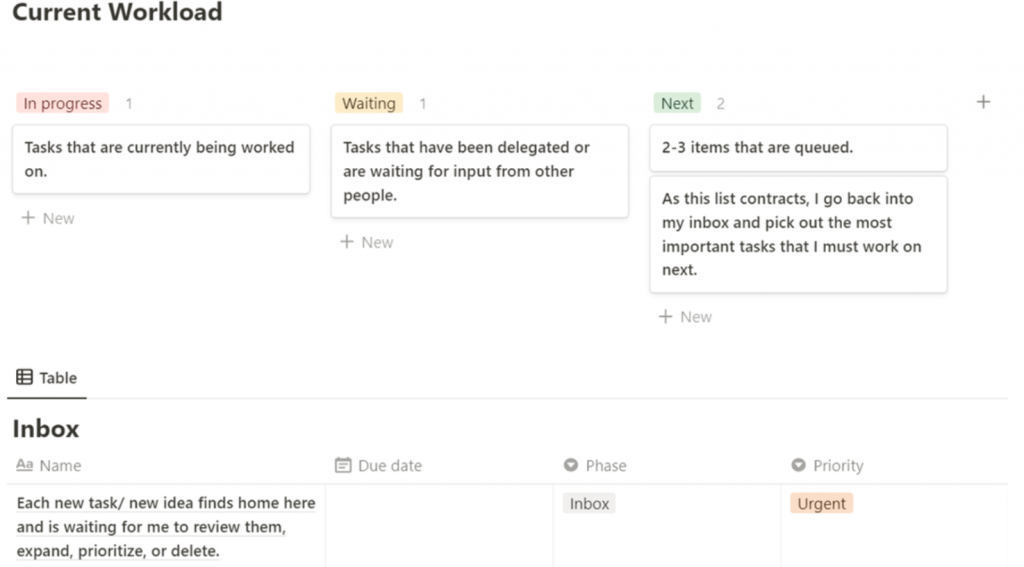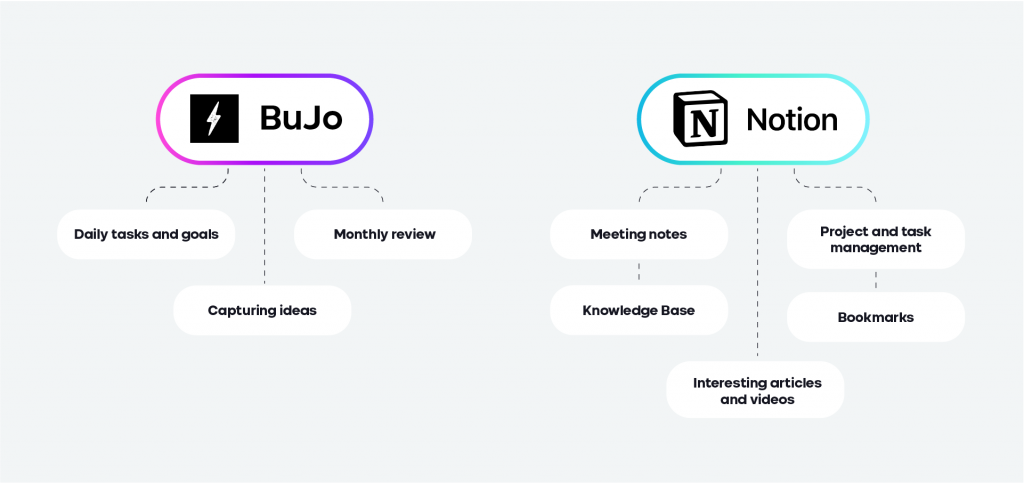Being a software developer is not only about writing code. It’s about solving problems, which is why you must establish a reliable productivity system. This system varies from person to person; while a simple task overview might be sufficient to some, others require a complex note-taking system that manages multiple projects and filters the important tasks from the useless.
I have been struggling to find a productivity flow that works for me for a couple of years. Some were lacking features, while others seemed too complex. I tried digital as well as analog. Until eventually, I found a hybrid solution that works best for me.
How I Discovered The Hybrid Note Taking Approach
There can be no winners in the never-ending discussion on which note-taking approach is better – digital or analog. Both options have their pros and cons.
Going digital is efficient, fast, and fits in your pocket. It’s mostly searchable, easy to organize into folders and tags. But it can feel like a never ending pile of unrelated notes. The digital productivity market is full of competing apps, so it is not easy to settle into one.
Analog is slower, it allows you think as you take notes. It is very individual, but can also be rigid. Searching for notes can be very difficult, especially if you need to find something from a long time ago. Misplacing or leaving your notebook at home can be disastrous.
For me, it does not have to be binary. I use my physical notebook as the main tool for taking notes and capturing ideas or tasks that require my attention. But if it’s not close by – I use my mobile device and capture ideas in Notion. My notebook acts as an inbox for all incoming thoughts, and I use it to look back at what happened this week or month.
The Bullet Journal Method
I tried work planners with weekly templates. They seemed convenient at first, but often there was not enough space for notes on one day, while other times I had weeks of blank pages.
I tried taking notes in a non-structured way, just writing things down as they come to my mind. But it became very difficult to find something a month later, and related ideas would be scattered across pages.
I tried post-it notes, but they never stuck (pun intended).
I tried many digital apps, but the ideas would just get lost.
In 2020 I found the Bullet Journal Method by Ryder Carroll. Also known as BuJo, this method takes inspiration from David Allen’s Getting Things Done methodology. BuJo is a very flexible, individual, analog note taking system. It helps filter out the important ideas from the useless ones, connecting mindfulness with productivity. Its rapid logging concept helps capture thoughts very quickly and uses fewer words.
It is very customisable – some BuJo enthusiasts fill their notebooks with creative and colorful drawings, while others use a minimalistic approach. It is also very forgiving – if something does not work for you, you can adjust the system by taking out the parts that don’t work, and adding something new.I needed something quick and efficient, so I’m using a minimalistic approach. I have a monthly log, a daily log, and a few collections – a reading list, an idea dump, and a habit tracker (you can find out more about these in the Bullet Journal blog). However, I’m fully digital when it comes to planning my calendar. In my case, an analog notebook is the wrong tool for it – the events often get rescheduled, I need to share my calendar with other people, and it’s just so much simpler to do digitally.
Bookmarks Are Where Links Go To Die
Let’s say you find an interesting article or a Youtube video that you want to come back to later. So many times I’ve seen other people – and have done so myself – save a browser bookmark, or add that video to a “watch later” list. Ultimately, they leave pieces of content spread across multiple sites, where it is shortly forgotten and never returned to again.
It is important to go back and look at saved items, capture the meaningful ideas, and connect them together in order to get the most out of them. It’s especially hard to do when all your saved items are spread across multiple platforms. Therefore I never use browser bookmarks and watchlists. Everything is saved in a single centralized inbox.
I use Notion as my digital note taking app, because it is very customisable and feature-rich. Here’s how I capture interesting content:
- Create a “bookmarks” database.
- Using the “Save to Notion” Chrome extension, save interesting links to that database.
- Take some time to review the items a few days later.
- Review the content, take notes, and capture new ideas.
- Throw out what becomes redundant.

Creating the Right Workflow
Notion is also great for customizing your workflow. You can set it up to be your inbox, task manager, creative sandbox or even collaboratively manage large projects. After some trial and error, I have set up my Notion workspace to fit my workflow.
First of all, I have created a dashboard that contains the tasks that I am (or should) be working on. All work is divided into four sections: in progress, waiting, next and inbox.

Secondly, I have a Knowledge Base page, where I put my notes about articles I read, interesting insights, results from my tasks, meeting notes, etc. As I work on tasks in my list, I can easily link information from my Knowledge Base into the tasks and see a bigger picture. All related information is at my fingertips. The ability to search notes and link them together helps me never start with a blank page.
Conclusion

This simple system has worked for me for almost 2 years and helped me focus on what is important. I am confident that I can adapt as my workflow evolves. Hopefully, this minimalistic approach can be an inspiration to anyone looking to improve their productivity.

This article was written by TeleSoftas PHP Team Tech Lead Tadas Maslauskas. For more insights from Tadas follow him on Linkedin.
